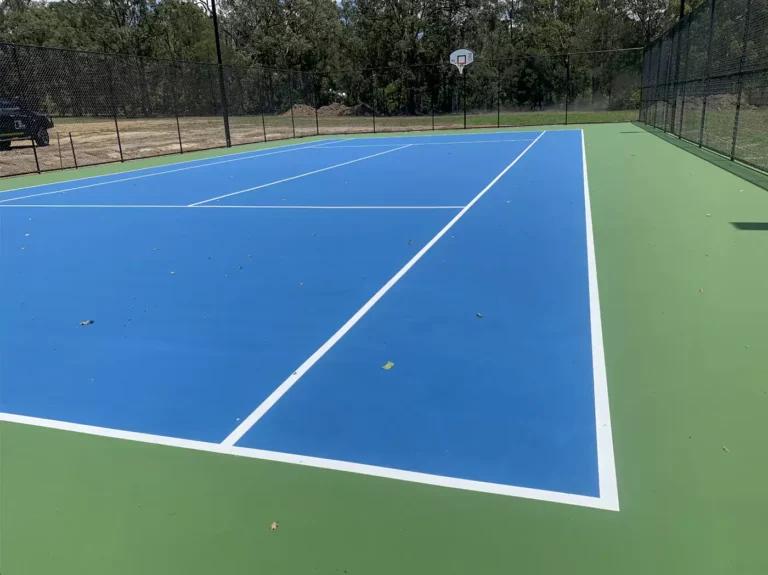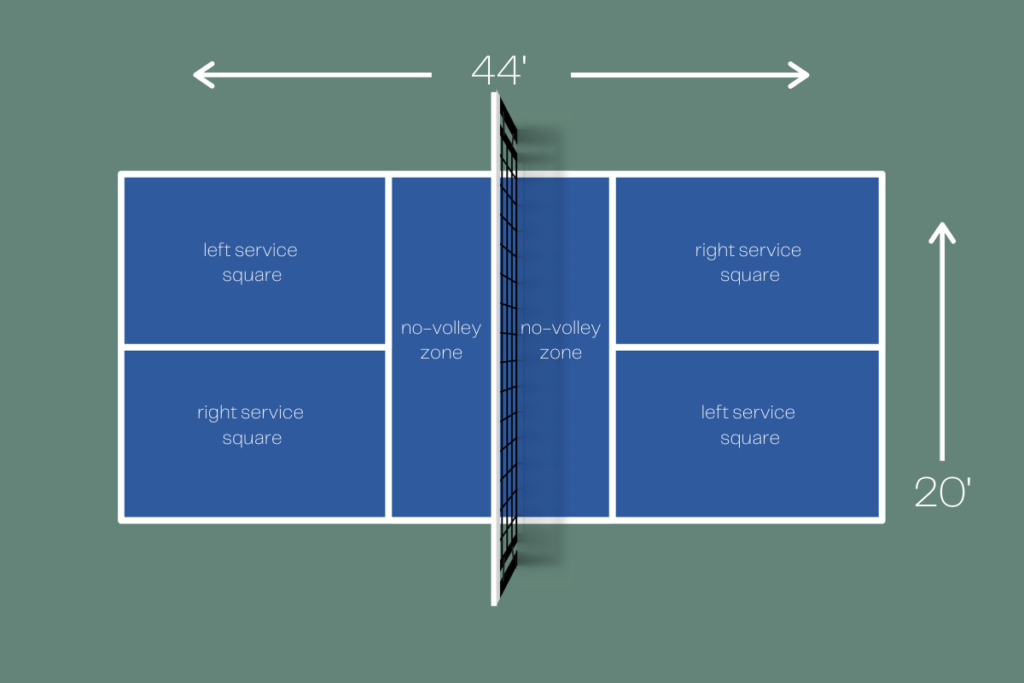Top Notch Pickleball Court Construction for Every Degree of Play
Top Notch Pickleball Court Construction for Every Degree of Play
Blog Article
Sustainable Practices in Pickleball Court Construction You Should Know
As the appeal of pickleball remains to increase, so too does the need for sustainable methods in court building and construction. This technique not just addresses ecological issues yet also enhances the longevity and capability of the courts. From selecting environment-friendly materials to implementing effective drain and energy-saving lighting options, there are countless techniques to take into consideration. The influence of these methods prolongs much beyond the court itself. Recognizing just how each element adds to a more lasting future welcomes better exploration into the complex equilibrium between entertainment development and environmental stewardship.
Selecting Eco-Friendly Products
Choosing environment-friendly materials is an important action in the building and construction of lasting pickleball courts. The selection of sustainable products not just decreases environmental effect however likewise enhances the durability and performance of the court. Trick products consist of reused rubber for the surface, which uses outstanding longevity and shock absorption while drawing away waste from landfills.
Furthermore, making use of in your area sourced materials minimizes transportation emissions and sustains local economies. Pickleball court construction. Utilizing indigenous woods for fence and seating can offer a sustainable aesthetic while making certain durability versus the aspects.
Integrating permeable materials for court structures can additionally contribute to sustainability by enabling natural water drain and reducing drainage. These options not only safeguard neighborhood ecosystems however additionally advertise much healthier play atmospheres.
Effective Water Drainage Solutions
While the selection of environment-friendly materials is important, carrying out reliable drain services is equally critical for keeping sustainable pickleball courts. Appropriate drain not only safeguards the court surface from water damage but additionally decreases erosion and drainage, promoting environmental stability.
Effective drainage systems can consist of absorptive paving, which allows water to penetrate the ground rather than pooling on the surface. This decreases the possibility of standing water, which can cause mold and other upkeep problems. Furthermore, incorporating strategically positioned water drainage networks and swales can route excess water away from the court area, making certain a dry having fun surface area and protecting against dirt erosion.
Making use of native plants in the landscaping around the courts can further improve drainage by absorbing excess water and decreasing runoff. These plants need less irrigation and advertise biodiversity, aligning with sustainable practices.
Moreover, it is vital to on a regular basis keep the drainage system to guarantee its long-lasting performance. This consists of clearing debris and monitoring for blockages. By prioritizing effective drain services, pickleball court manufacturers can significantly add to the sustainability and longevity of the facility, ultimately profiting both gamers and the atmosphere.
Energy-Efficient Lighting Options
As the need for pickleball remains to expand, incorporating energy-efficient lights options into court layout has ended up being significantly important for sustainability. Typical lighting systems usually eat too much power, contributing to greater operational costs and environmental influence. As a result, embracing contemporary, energy-efficient modern technologies is necessary for both brand-new buildings and improvements.
LED (Light Emitting Diode) lights attracts attention as a premier selection due to its go to the website long life and power cost savings (Pickleball court construction). Contrasted to standard illumination, LEDs use around 75% less power and can last approximately 25 times longer, considerably minimizing maintenance expenses. Furthermore, the directional nature of LED lighting minimizes light contamination, guaranteeing that illumination is concentrated on the court instead of surrounding locations.

Sustainable Surface Alternatives
Exploring lasting surface choices for pickleball courts has gained traction among building contractors and gamers alike. The focus on environment-friendly products not only lines up with the expanding ecological recognition but also enhances the performance and durability of the courts.
This material provides exceptional shock absorption, minimizing the danger of injuries for gamers while advertising sustainability. These tiles are simple to mount and replace, and their convenience allows for numerous court arrangements.
All-natural lawn courts are additionally emerging as a lasting option, advertising biodiversity and reducing the warmth island result. They call for normal upkeep and water, which might not line up with all sustainability goals.

Water Preservation Strategies

An additional effective method entails the setup of rainwater harvesting systems. These systems store and accumulate rain for usage in keeping court surfaces and landscape design. This approach not only preserves safe and clean water however also reduces dependence on local resources.
Additionally, using drought-resistant landscaping around the courts is important. Native plants need less water and are better adjusted to neighborhood environment problems, thus reducing overall water usage. Additionally, using efficient watering systems, such as drip watering, guarantees that water is supplied straight to plant roots, lessening dissipation and waste.
Verdict
Including lasting techniques in pickleball court construction dramatically adds to ecological conservation and source performance. By focusing on these practices, the building and construction of pickleball courts can align with more comprehensive environmental objectives while advertising long discover this info here life and capability within neighborhoods.
As the appeal of pickleball proceeds to rise, so as well does the requirement for sustainable techniques in court building.Picking environmentally friendly materials is an important action in the building and construction of sustainable pickleball courts. By prioritizing energy-efficient illumination alternatives, pickleball court constructors can contribute to a more lasting future while fulfilling the needs of stakeholders and gamers alike.Integrating sustainable surface area alternatives not only enhances the performance of pickleball courts yet also paves the means for executing effective water conservation strategies.Including lasting practices in pickleball court building substantially adds to environmental preservation and source performance.
Report this page